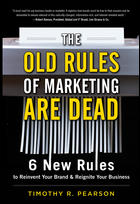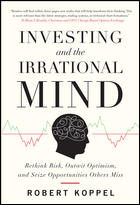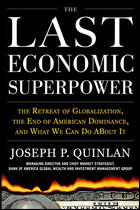 |
| Image via Wikipedia |
1/1/2018 Note: Recharacterization of Roth conversion is no longer allowed as of tax year 2018. The last tax year that you could recharacterize Roth conversions is 2017. See Roth Recharacterization is No Longer Allowed for more details.
If you have an IRA you probably know about the concept of a Roth IRA conversion – where you take distribution of a portion of your IRA and directly transfer that money into your a Roth IRA, paying tax as you go. Then the Roth IRA can continue to grow tax-free (as Roth IRAs do) and you’ll never owe tax on your qualified distributions from the Roth IRA.
In addition, if the investments you’ve made in the Roth IRA have lost money, before October 15 of the following year you have the opportunity to recharacterize your Roth conversion. If you didn’t recharacterize, you’d be paying tax on a conversion amount that is much lower now if there was a downturn in the investments, so your average tax rate is much higher than you’d hoped. By recharacterizing, you can undo the conversion or a part of it.
I had a question raised to me recently about using the recharacterization option to your advantage. Here’s the gist of the strategy: If you have an IRA worth, say $100,000, you could convert it into two Roth IRAs, one half invested in a 2x leveraged bull-oriented investment, and the other half invested in a 2x leveraged bear-oriented investment.
If the two investments go flat for the year, your conversion could be recharacterized with no tax consequence. However, if the market went up by 10%, your bear holding would be down 20% (being leveraged 2x) and the bull holding would be up 20% (vice versa had the market dropped). This would give you the opportunity to recharacterize only the bear holding, leaving you with a traditional IRA worth $40,000. Your Roth IRA would be worth $60,000, although you would only have to pay tax on the original $50,000 converted. At a 25% tax rate that works out to $12,500 in tax, which would only be 20.83% on the Roth IRA.
Perhaps that rate isn’t low enough for you though – maybe you need to ensure that the tax rate is even lower, say 15% or less. Following the example, you’d need to see an increase of 66% or more in your holdings, which would equate to a 33% move in the market (for your leveraged holdings, one way or the other). If the market doesn’t move in the amount you hoped, you can just recharacterize the entire conversion, nothing lost.
You probably want to pull your “winnings” off the table and put the remaining Roth IRA into a safe(r) investment than the leveraged investments chosen before, such as a balanced fund or even straight bonds.
Now you now can pull the same maneuver in the following year with whatever is left in the traditional IRA, splitting it just as before. Over time you should wind up with a significant Roth IRA with a lower tax cost.
This is not a huge payoff strategy – you’ll be losing money in your traditional IRA holdings each year, guaranteed. Your net position would be the same (minus the tax).
After the first year of the example, assuming a 20% gain you’d have with $60,000 in the Roth and $40,000 in the traditional IRA, having paid $12,500 in tax. Second year, same result and you’d have $84,000 in Roth, and $16,000 in traditional IRA, paying $5,000 more in tax. Third year, again the same 20% gain resulting in a total of $93,600 in Roth, $6,400 in trad, paying $2,000 in tax. And so on, until the amount gets too small to work with any more.
The end result is that all of this tallies up to the same $100,000 that you started with, having paid tax of just less than $21,000, versus the original $25,000 you would have paid. Holding out for a higher return from the strategy would yield a lower tax rate overall.


![image[2] image[2]](https://financialducksinarow.com/wp-content/uploads/2011/09/image2.png)





























 Have you found yourself wondering over the past couple of years just how the Great Recession came about? What sorts of things led up to this meltdown, and how far in advance did it all start? What might we do in the future to keep something similar from happening again?
Have you found yourself wondering over the past couple of years just how the Great Recession came about? What sorts of things led up to this meltdown, and how far in advance did it all start? What might we do in the future to keep something similar from happening again?
 Sterling Raskie, MSFS, CFP®, ChFC®
Sterling Raskie, MSFS, CFP®, ChFC® The latest in our Owner’s Manual series, A 401(k) Owner’s Manual, was published in January 2020 and is available on
The latest in our Owner’s Manual series, A 401(k) Owner’s Manual, was published in January 2020 and is available on  A Medicare Owner’s Manual, is updated with 2020 facts and figures. This manual is available on
A Medicare Owner’s Manual, is updated with 2020 facts and figures. This manual is available on  Social Security for the Suddenly Single can be found on Amazon at
Social Security for the Suddenly Single can be found on Amazon at  Sterling’s first book, Lose Weight Save Money, can be
Sterling’s first book, Lose Weight Save Money, can be  An IRA Owner’s Manual, 2nd Edition is available for purchase on Amazon. Click the link to choose the
An IRA Owner’s Manual, 2nd Edition is available for purchase on Amazon. Click the link to choose the  Jim’s book – A Social Security Owner’s Manual, is now available on Amazon. Click this link for the
Jim’s book – A Social Security Owner’s Manual, is now available on Amazon. Click this link for the  And if you’ve come here to learn about queuing waterfowl, I apologize for the confusion. You may want to discuss your question with Lester, my loyal watchduck and self-proclaimed “advisor’s advisor”.
And if you’ve come here to learn about queuing waterfowl, I apologize for the confusion. You may want to discuss your question with Lester, my loyal watchduck and self-proclaimed “advisor’s advisor”.